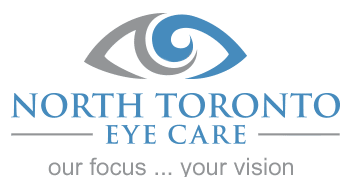Cataract,Eye Exam,Eye Health,Featured,Glaucoma,Medical News,Retina

Falls among older adults are becoming increasingly common, particularly during snowy and icy winter conditions, and these incidents can lead to serious eye injuries as well as other forms of trauma. As Canada’s population ages, preventing falls and protecting eye health have become major public health priorities. Vision plays a critical role in maintaining balance, mobility, and overall independence, and seniors with even mild visual impairment face a significantly higher risk of falling.
The Growing Concern: Aging, Eye Injuries, and Falls
Falls remain one of the leading causes of injury among older adults, and eye injuries sustained during falls are associated with notably higher mortality rates.1 Research shows that seniors who experience ocular trauma have an elevated risk of death within five years compared to those without eye injuries, partly because aging diminishes instinctive protective responses such as shielding the face during a fall.2
Most fall-related eye injuries occur in or around the home and are especially frequent in winter months, when icy and snowy surfaces increase slipping hazards. In regions with harsh winters, older adults must take additional precautions to protect both their vision and mobility.3
How Vision Impairment Increases Fall Risk
Visual impairment is a well-documented risk factor for falls.
- Reduced depth perception and contrast sensitivity make it difficult to detect steps, curbs, and uneven surfaces.
- Peripheral visual field loss, particularly in the area needed to detect obstacles underfoot, is strongly associated with falls.
- Decreased overall visual acuity leads to reduced confidence, causing seniors to limit physical activity—ironically increasing fall risk due to weakened balance and strength.
Eye Diseases That Elevate Fall Risk
Several common age-related eye conditions significantly increase fall risk by impairing visual clarity, peripheral vision, or contrast sensitivity:4
- Macular Degeneration: Loss of central vision affects detailed tasks and mobility.
- Glaucoma: Often symptomless early on, but causes irreversible optic nerve damage and peripheral visual field loss.
- Cataracts: Clouding of the lens reduces clarity and contrast, increasing fall likelihood.
- Diabetic Retinopathy: A leading cause of blindness among older adults that can reduce visual clarity and reduce field of vision and impair contrast sensitivity.
Early detection and treatment of these conditions can dramatically reduce both fall risk and long-term vision loss.
Winter Hazards and Preventive Strategies
Snow and ice amplify environmental hazards, making fall prevention especially important in colder months. Seniors and caregivers can reduce risks through the following strategies:3
- Keep walkways clear, salted, and well-maintained to prevent slipping.
- Wear supportive footwear with strong traction; consider mobility aids when outdoors.
- Use bright, consistent indoor and outdoor lighting, especially where snow or ice may conceal elevation changes.
- Engage in routine physical activity and maintain good nutrition to support strength and balance.
- Schedule regular eye examinations to address vision changes before they contribute to falls.
- Monitor for early signs of eye disease and report any visual changes promptly.
The Role of Eye Care in Fall Prevention: Key Takeaways
Protecting your vision means protecting your independence. Prioritizing eye health is an essential step toward safe, confident aging. Schedule your regular eye assessment with North Toronto Eye Care to maintain your vision and reduce your risk of falls and injuries.
References
- https://www.aoa.org/news/clinical-eye-care/public-health/link-between-eye-examinations-and-fall-prevention-in-older-adults?sso=y
- National Academies of Sciences, Engineering, and Medicine; Health and Medicine Division; Board on Population Health and Public Health Practice; Committee on Public Health Approaches to Reduce Vision Impairment and Promote Eye Health; Welp A, Woodbury RB, McCoy MA, et al., editors. Making Eye Health a Population Health Imperative: Vision for Tomorrow. Washington (DC): National Academies Press (US); 2016 Sep 15. Summary. Available from: https://www.ncbi.nlm.nih.gov/books/NBK402361/
- https://www.comfortkeepers.ca/toronto/blog/fall-prevention-in-seniors-taking-care-during-the-winter-months/
- Shuyi O, Zheng C, Lin Z, Zhang X, Li H, Fang Y, Hu Y, Yu H, Wu G. Risk factors of falls in elderly patients with visual impairment. Front Public Health. 2022 Aug 22;10:984199. doi: 10.3389/fpubh.2022.984199. Erratum in: Front Public Health. 2022 Dec 06;10:1087472. doi: 10.3389/fpubh.2022.1087472. PMID: 36072374; PMCID: PMC9441862.
